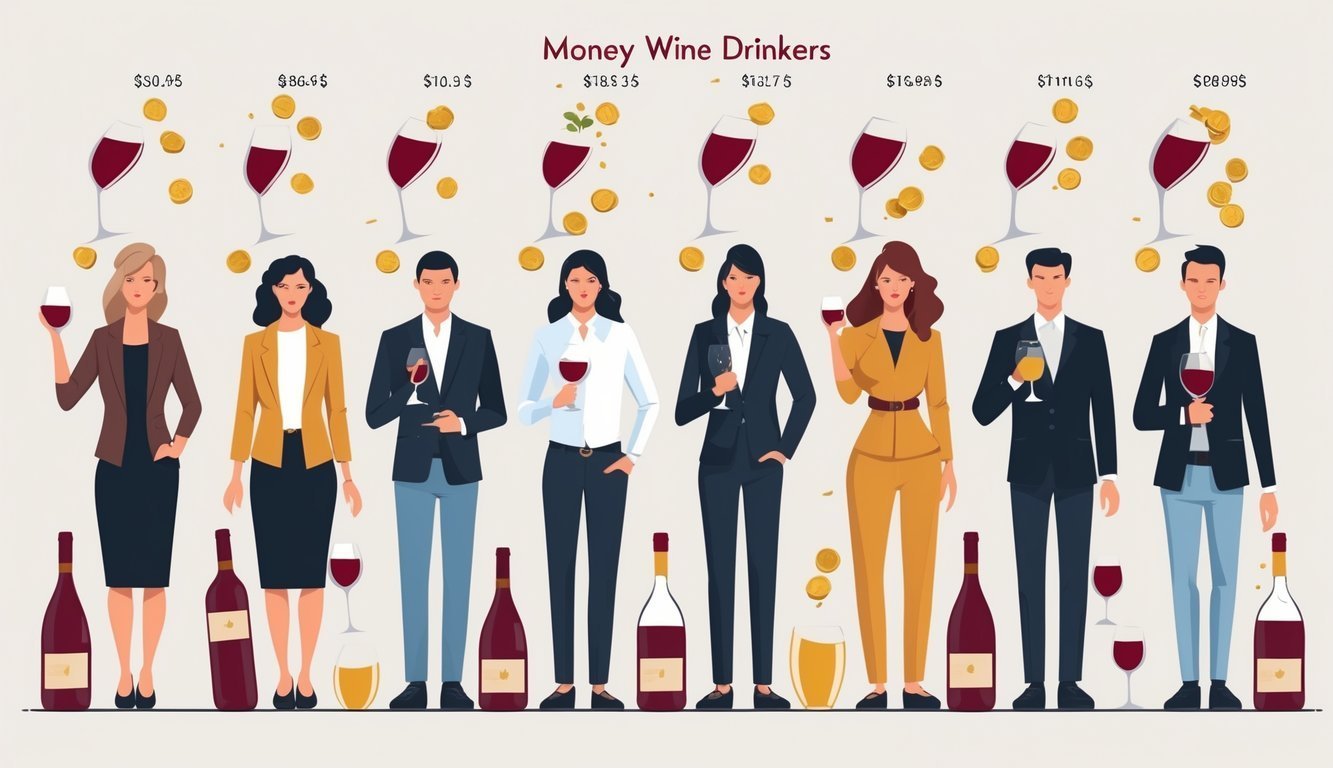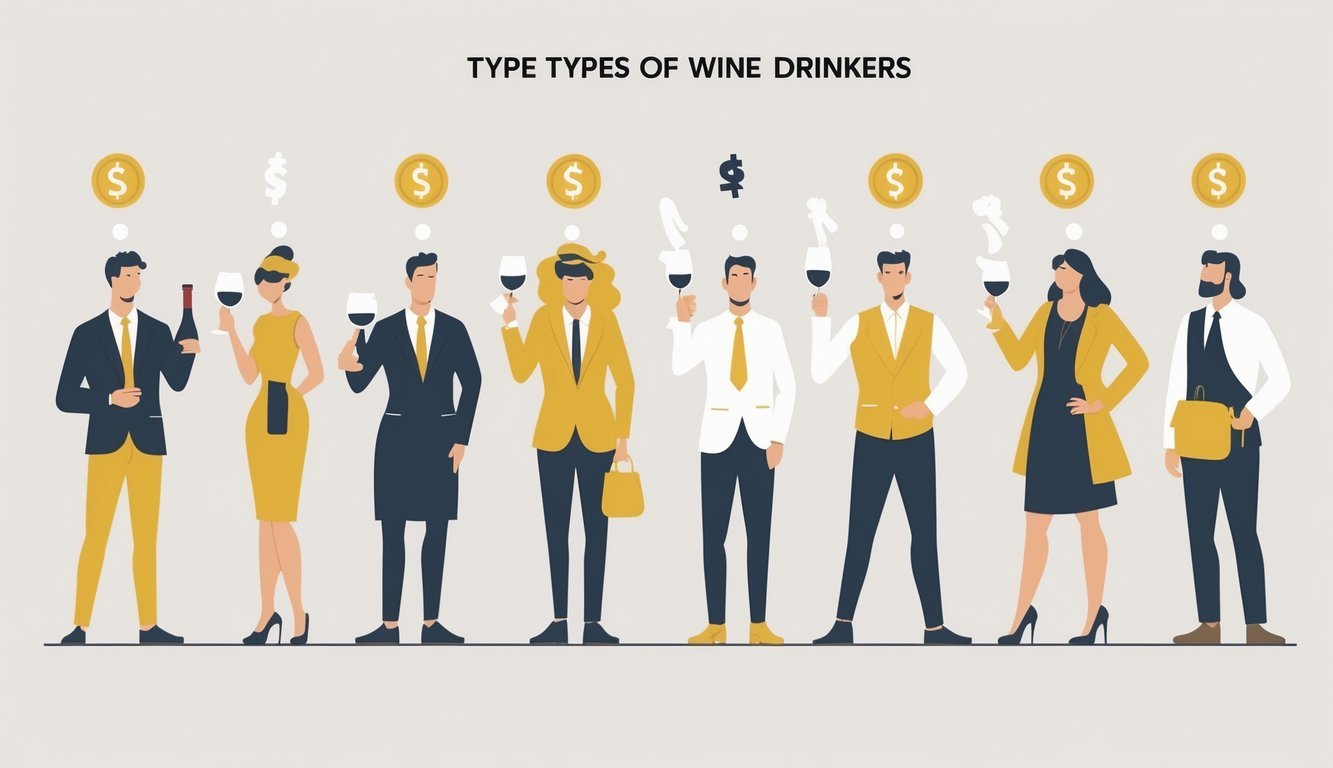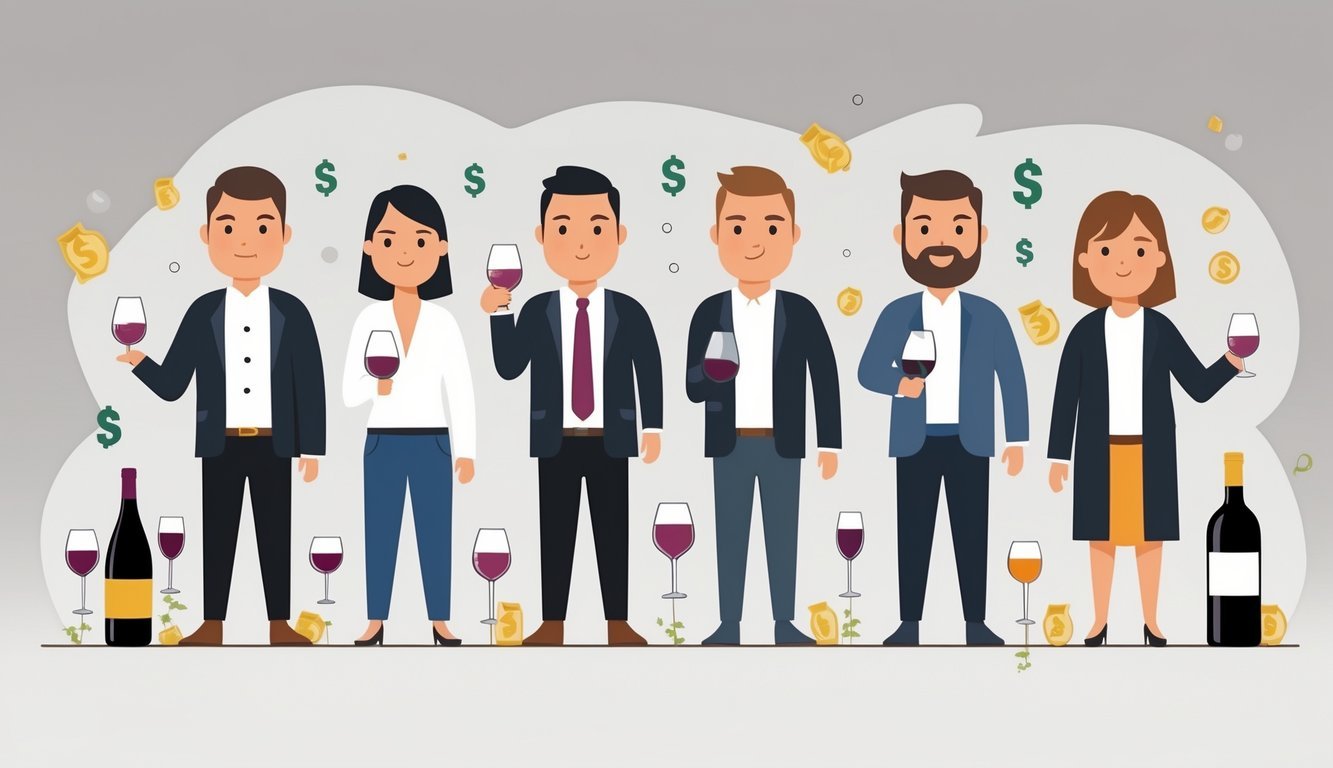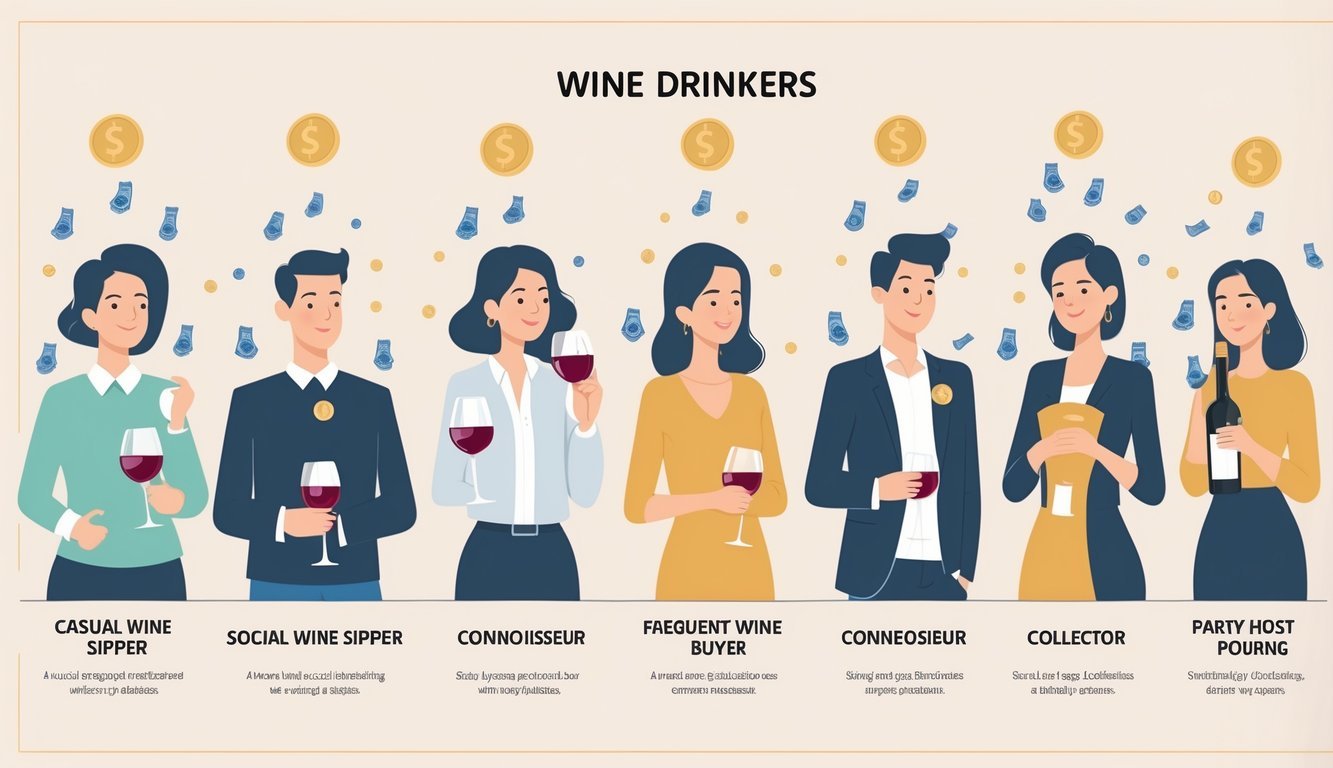PsychNewsDaily Publishers
100 Summit Drive
Burlington, MA, 01803
Telephone: (320) 349-2484
PsychNewsDaily Publishers
100 Summit Drive
Burlington, MA, 01803
Telephone: (320) 349-2484
Wine drinkers waste significant amounts annually due to overbuying, spoilage, and poor choices, with different consumption habits impacting financial losses and waste levels.

Wine drinking is a pleasure for many, but honestly, it can get expensive fast. Different types of wine drinkers spend and waste money in their own unique ways every year.
If you stop to think about it, you might be losing more than you realize. Figuring out where your money goes can help you make better choices—like buying only what you’ll actually drink.
On average, six types of wine drinkers waste anywhere from hundreds to thousands of dollars a year, depending on their habits. Some people buy bottles they never finish. Others go for cheap wine that ends up down the drain because it just doesn’t taste good.
If you’re tired of tossing out wine or money, check out this breakdown of wine drinker types and how much they typically lose. You might be surprised at how easy it is to cut back on waste and save a bit more.

Wine costs can sneak up on you, especially if you don’t pay attention to how often you buy or what you’re picking up. Different wine drinkers waste different amounts every year, mostly because of their spending styles and the price tags on their bottles.
How much you spend on wine depends a lot on your drinking habits and what you like. Casual drinkers usually waste less because they don’t buy much to begin with.
Enthusiasts who like to try lots of types or rare bottles might end up tossing out more, especially if something spoils or just sits around too long.
Some folks spend big because they go for premium labels or unique varietals. Studies show that over half of wine drinkers make more than $100,000 a year, which means they might have bigger wine budgets.
But buying in bulk or picking pricey bottles you never finish can lead to more waste.
The price per bottle really matters when it comes to wasted money. Expensive wines hurt your wallet more if you don’t finish them, even if you only waste a little.
A lot of waste happens because people buy more than they can drink, or they keep wine too long and it loses its flavor. Specialty wines—like sparkling or dessert wines—are especially risky because they don’t last as long and usually cost more.
| Wine Type | Average Price per Bottle | Common Waste Cause |
|---|---|---|
| Table Wine | $10 – $20 | Overbuying, ignoring date |
| Sparkling Wine | $15 – $40 | Short shelf life |
| Dessert Wine | $20 – $50 | Rarer occasions, spoilage |
| Premium/Collector | $50+ | Buying too much, not drinking |
If you pay attention to the link between price, your drinking habits, and how much you waste, you’ll probably find some easy ways to save.

Several things really shape how much you spend on wine—and how much you end up wasting. The brand, where the wine’s from, the kind of bottle closure, and even marketing all play a part.
The brand you pick has a big impact on price. Big names usually charge more because they spend a lot on ads and quality control.
If you stick with premium brands, you might pay extra just for the name, not always for better flavor.
Smaller or less famous brands can sometimes offer good quality for less. But if you don’t know them, you might grab a bottle you don’t like and end up wasting it.
Trying new brands in small amounts or checking reviews first can help.
Wines from far away almost always cost more because of shipping and import taxes. A bottle from France or Italy often costs more than something local.
You might also find that wines from certain places just don’t fit your taste, so you waste more. Import costs mean spoiled bottles hit your wallet harder. Local or regional wines can be a safer bet for your budget and taste buds.
The cork matters more than you’d think. Natural corks are traditional and pricier. They let in a little air, which sometimes helps the wine—or ruins it if you store it wrong.
Screw caps or synthetic corks are usually cheaper and keep wine fresher after opening. If you don’t finish bottles quickly, these alternatives can save you money and cut down on waste.
Marketing is sneakier than you might expect. Ads, social media, and eye-catching packaging can push you to buy pricier bottles or jump on trends.
Sometimes you end up with wine you don’t even like, just because it looked cool or had a good ad. That’s a fast track to waste. If you pay attention to marketing tricks, you can focus on what you actually enjoy.

Wine spending really depends on how often you drink and what kinds you go for. Some people shell out way more than others, just because of their habits.
Casual drinkers usually spend under $200 a year. More serious wine fans might spend between $500 and $1,000. Collectors who chase rare or pricey bottles? They can easily drop over $1,000 every year.
If you drink wine a few times a week, you’ll spend more than someone who saves it for special occasions. Most people who buy mid-range wine pay $20–$30 per bottle. Going for rare or expensive bottles really bumps up your yearly total.
Younger drinkers—Millennials and Gen Z—tend to spend more on unique or premium wines. About 58% of Americans spend less than $20 per bottle. Older drinkers usually stick to classic brands and moderate spending.
Wine spending keeps creeping up, especially as younger folks get into it. Premium wines are getting more popular, and some people are raising their budgets as their tastes change.
Most casual drinkers spend just a tiny slice of their income on wine. For dedicated enthusiasts, it might be a noticeable but still manageable part—usually less than 5%. Collectors might set aside even more, depending on how deep their passion goes.
Every year, people in the US toss out about $1.5 billion worth of wine because they don’t finish bottles or let them spoil.
When you waste wine, you’re basically pouring money down the drain.
If you pay a little more attention, you can save yourself from this kind of loss.